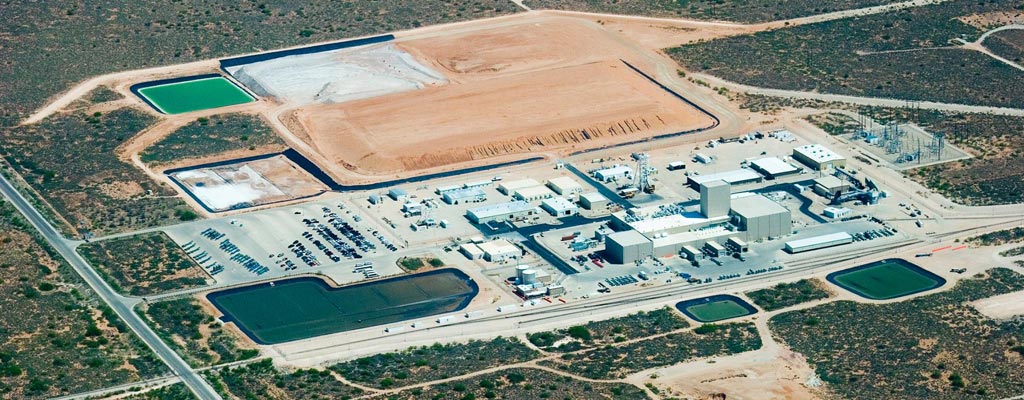The Project Pele microreactor will be fueled by TRISO fuel particles like those shown here. (Photo: INL)
PPPL physicist Walter Guttenfelder with figures from the paper he coauthored with members of the NSTX-U team and 23 collaborative institutions worldwide. (Photo: Elle Starkman/PPPL Office of Communications. Collage: Kiran Sudarsanan)
According to the Department of Energy’s Princeton Plasma Physics Laboratory, recent simulations and analysis demonstrate that the design of its flagship fusion facility, the National Spherical Torus Experiment Upgrade (NSTX-U), which is currently under repair, could serve as a model for an economically attractive next-generation fusion pilot plant.
Rendition of a VOYGR plant layout. (Image: NuScale)
Universities are places where professionals, experts, and students come together to teach and learn, to conduct and disseminate research, and to dream and explore. Universities have a long history of technological innovation and development. It should therefore come as no surprise that institutes of higher education have been an integral part of the recent explosion of innovation within the advanced nuclear reactor community. Universities have not only powered workforce and technology development, but in a number of cases, they have served as the actual birthplaces of today’s advanced reactor designs.
NETS participants are credited with helping relaunch the nation’s domestic production of Pu-238 to fuel the Mars Perseverance rover. (Photo: NASA)
Connecting nuclear engineers and scientists with space exploration missions has been a focus of the American Nuclear Society’s Aerospace Nuclear Science and Technology Division since its creation in 2008. One of the main ways those connections are made is through the Nuclear and Emerging Technologies for Space (NETS) conference, which the division supports in conjunction with the National Aeronautics and Space Administration.
An NWMO geoscientist examines core samples pulled from rock in South Bruce, Ontario, as part of investigations of a potential deep geological repository. (Photo: NWMO)
Canada’s Nuclear Waste Management Organization (NWMO) has completed a deep borehole drilling program at the two sites in Ontario under investigation for potentially hosting a deep geological repository to hold the country’s spent nuclear fuel. The NWMO said that Canada’s top geoscientists are leading the studies, in which approximately eight kilometers of core samples were pulled from the bedrock in the Wabigoon-Ignace area and the Saugeen Ojibway Nation (SON)–South Bruce area.
The USS Enterprise (CVN-65)
The Naval Academy ANS student section, with support from the Washington, D.C., local section, held its semiannual dinner on March 29 in Annapolis, Md. The event was attended by more than 100 people, including midshipmen, professors from the U.S. Naval Academy, local ANS members, and ANS President Steve Nesbit.
The evening’s program was hosted by the student chapter president, Midshipman First Class Sara Perkins, and was headlined by the director of the Naval History and Heritage Command, Rear Admiral (retired) Samuel Cox.
The Department of Energy's Waste Isolation Pilot Plant, in New Mexico. (Photo: DOE)
The Waste Isolation Pilot Plant’s Emergency Operations Center (EOC) and Joint Information Center (JIC) were activated on April 9 following an abnormal event that occurred during routine waste handling at the Department of Energy’s WIPP repository for transuranic waste, near Carlsbad, N.M.









 Research into the high-resolution detection of plutonium mixtures by Purdue University professor Rusi Taleyarkhan and his team was featured on the cover of the February issue of the Journal of Analytical Atomic Spectroscopy, published by the British Royal Society of Chemistry.
Research into the high-resolution detection of plutonium mixtures by Purdue University professor Rusi Taleyarkhan and his team was featured on the cover of the February issue of the Journal of Analytical Atomic Spectroscopy, published by the British Royal Society of Chemistry.








